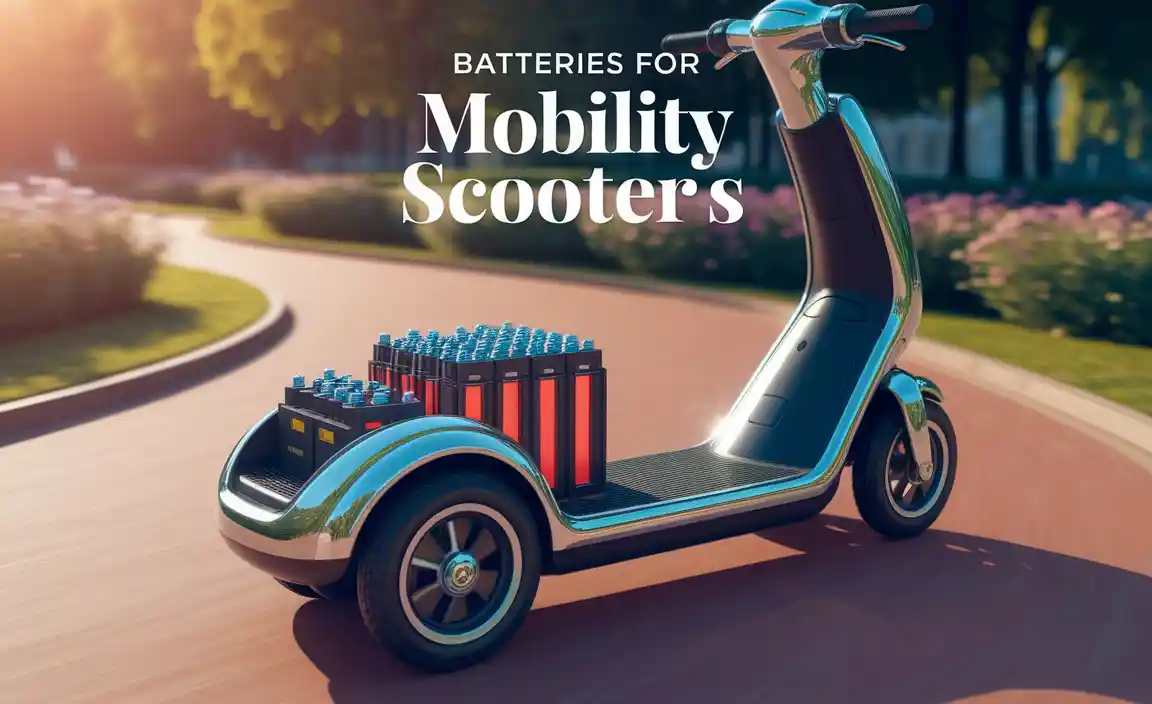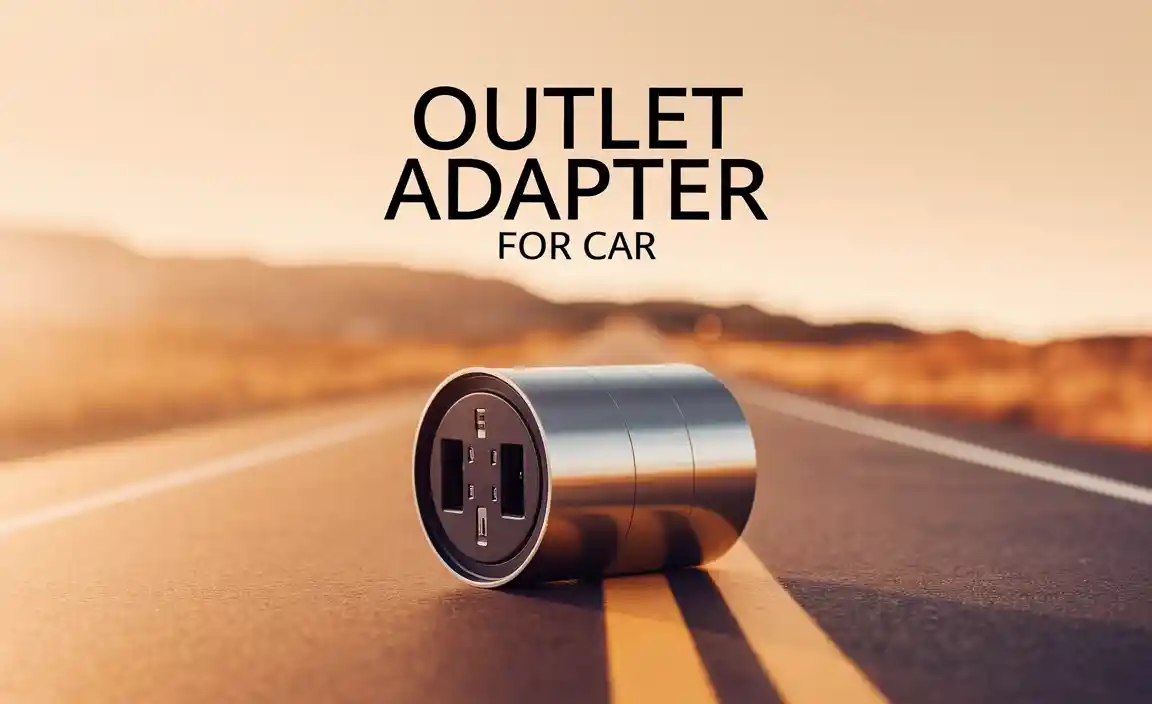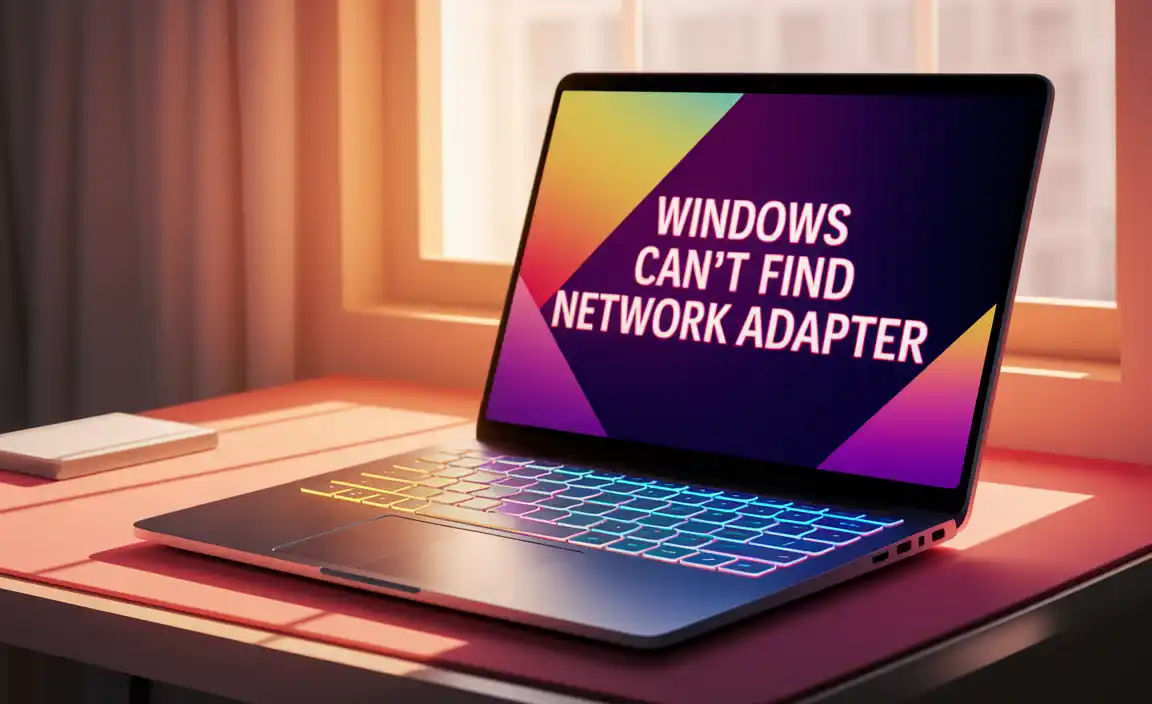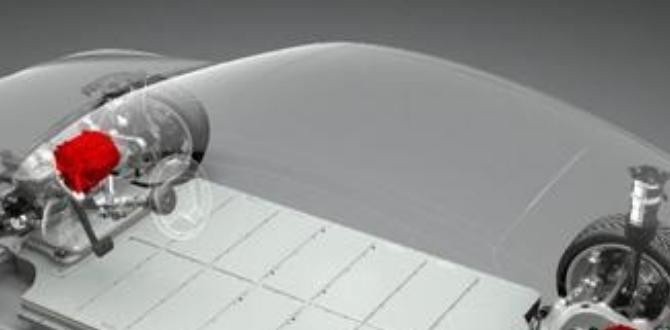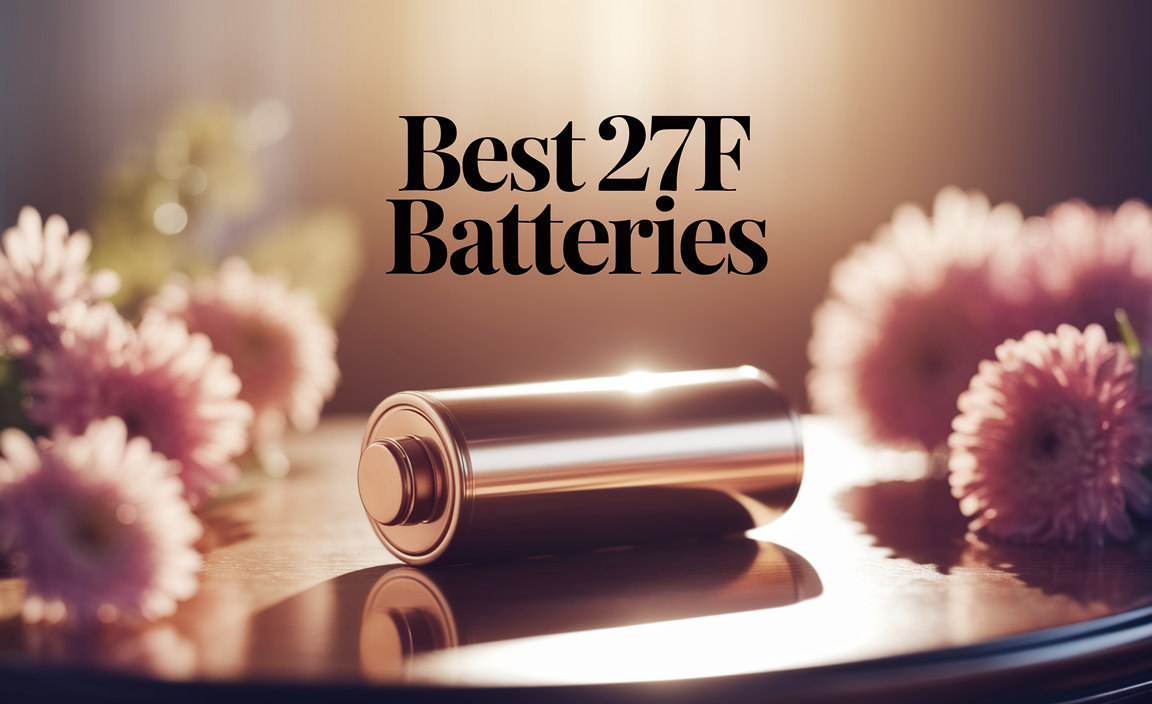Have you ever watched a drone soar through the sky? It’s amazing how these flying machines can capture stunning videos and photos. But did you know that batteries are key to making them work? Without the right batteries for drones, they simply can’t fly.
Imagine trying to ride a bike with a flat tire. It’s hard, right? Drones face a similar problem without powerful batteries. They need energy to lift off and stay in the air. The type of battery matters a lot. Some batteries last longer while others provide more power.
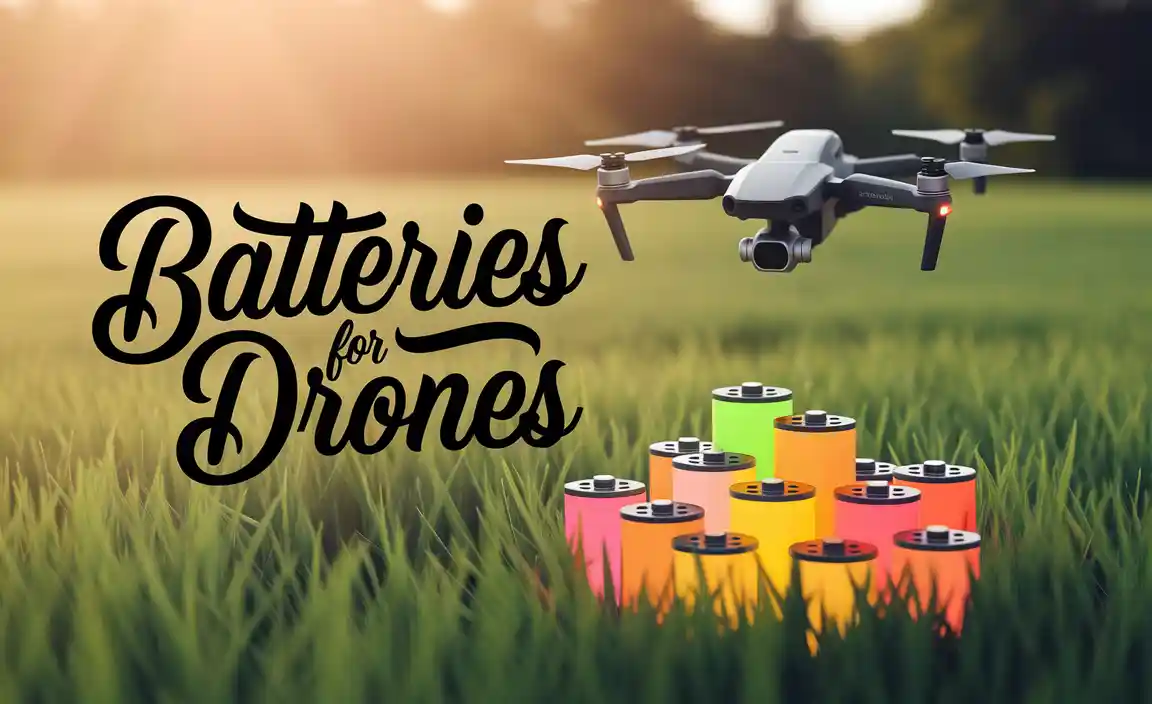
In this article, we will explore the world of batteries for drones. We’ll learn about different types and what makes some better than others. Fun fact: the battery can even affect how fast a drone flies! So, if you’re curious about choosing the best battery for your drone, keep reading!
Essential Batteries For Drones: Choosing The Right Power Source
Batteries for Drones
Drones are exciting tools for fun and work. But what powers them? That’s right, batteries! Understanding different types of batteries helps you choose the best one. Lithium Polymer (LiPo) batteries are common because they are lightweight and provide great power. Did you know that battery life affects how long a drone can fly? A good battery can mean up to 30 minutes in the air. So, choosing wisely keeps your drone soaring high!
Understanding Drone Batteries
Types of batteries: LiPo, Liion, NiMH. Key specifications: voltage, capacity, discharge rate.
Let’s dive into the world of drone batteries! There are three popular types: LiPo, Li-ion, and NiMH. Each type is like a character in a superhero movie. LiPo batteries are the speedy ones, perfect for racing! Li-ion batteries have a longer lifespan, while NiMH batteries are reliable, like your favorite old toy. Key features like voltage, capacity, and discharge rate help determine a battery’s performance. Here’s a quick look:
| Battery Type | Voltage | Capacity (mAh) | Discharge Rate |
|---|---|---|---|
| LiPo | 3.7V | 1000 – 6000 | High |
| Li-ion | 3.6V | 1500 – 3500 | Medium |
| NiMH | 1.2V | 600 – 3000 | Low |
Understanding these specs can make your drone adventures fly high!
Choosing the Right Battery for Your Drone
Factors to consider: size, weight, drone requirements. Compatibility with drone models and brands.
Picking the right battery for your drone is important for it to fly well. Look at the size and weight of the battery before buying. A battery that’s too heavy can weigh down your drone. Also, check your drone’s needs. It might need a certain voltage or capacity. Make sure the battery is compatible with your drone model and brand. Using the wrong battery can damage your drone. Keep these points in mind to ensure a smooth flight!
What factors should I consider for drone batteries?
Consider size, weight, and your drone’s requirements for a great flight.
Key Factors:
- Size: Fits well in the drone.
- Weight: Light enough for good flight.
- Requirements: Matches voltage and capacity.
- Compatibility: Works with your drone brand/model.
How to Extend the Lifespan of Drone Batteries
Best practices for charging and storage. Tips on maintaining battery health during flights.
To keep your drone batteries happy and healthy, follow some simple steps. First, always charge them with the right voltage—think of it as giving them the proper food! Avoid storing batteries in hot places; they don’t like the heat, just like we don’t love a sauna. During flights, keep an eye on the battery level. Landing early is better than crashing! Here’s a quick table with best practices:
| Best Practices | Dos | Don’ts |
|---|---|---|
| Charging | Use the right charger | Overcharge |
| Storage | Keep in a cool, dry place | Leave in direct sunlight |
| During Flights | Monitor battery levels | Push battery limits |
Taking these steps can make your batteries last longer, saving you time—and some dough! Happy flying!
Common Battery Problems and Troubleshooting
Signs of battery degradation. How to diagnose and fix charging issues.
Over time, drone batteries can show signs of wear. Look for reduced flight time or if the battery swells like it’s had one too many donuts! These are clear signs of battery degradation. If you notice your drone struggling to stay airborne, it’s time for a battery check. For charging issues, make sure the charger is plugged in—kind of important, right? If it’s still not charging, try using a different outlet or charger. Sometimes, batteries just need a little extra love!
| Signs of Degradation | Possible Solutions |
|---|---|
| Short flight times | Replace battery |
| Swelling or damage | Dispose safely |
| Won’t charge | Check charger/outlet |
Future Trends in Drone Battery Technology
Innovations in battery chemistry and design. Impact of advancements on drone performance and efficiency.
Exciting changes are coming to drone batteries! New ideas in battery chemistry are like magic potions for flying machines. Some smart scientists are creating lighter and longer-lasting batteries. These better batteries mean drones can soar higher and stay in the air longer—like superheroes! Plus, advancements help drones zoom around faster and carry heavier stuff without breaking a sweat.
| Battery Type | Advantages |
|---|---|
| Lithium-sulfur | Higher energy density, lighter weight |
| Solid-state | Improved safety, longer life |
| Cobalt-free | Eco-friendly, cost-effective |
These innovations are turning drones into super performers. Imagine sending a drone on a long mission without worrying about a low battery—sounds cool, right?
Conclusion
In summary, batteries for drones are crucial for their performance. They determine how long your drone can fly and how much weight it can carry. Choosing the right battery helps you enjoy longer flights and better adventures. We encourage you to learn more about battery types and care. Explore options, compare, and find the perfect fit for your drone!
FAQs
Sure! Here Are Five Related Questions On The Topic Of Batteries For Drones:
Sure! Here are five questions about drone batteries. Drone batteries give energy to fly. We need to charge them before flying. Some batteries last longer than others. It’s important to pick the right battery for a drone. Always follow safety rules when using them!
Sure! Please tell me what question you would like me to answer.
What Types Of Batteries Are Commonly Used In Drones, And How Do Their Characteristics Affect Flight Performance?
Drones usually use lithium polymer (LiPo) batteries. These batteries are light and can store a lot of energy. This helps drones fly longer and faster. The more energy a battery has, the longer the drone can stay in the air. Heavy batteries can make drones harder to fly, so we want them to be light!
How Does Battery Weight And Capacity Influence The Payload Capacity And Flight Duration Of A Drone?
The weight of the battery affects how much extra cargo (payload) a drone can carry. A heavier battery means less room for other things. Also, if the battery has a bigger capacity, it holds more energy. This allows the drone to fly longer. So, a good balance of battery weight and power helps the drone carry things and stay in the air longer.
What Are The Safety Considerations And Best Practices For Charging And Storing Drone Batteries?
When charging drone batteries, always use the charger that comes with them. Never leave them charging unattended. Store your batteries in a cool, dry place. Keep them away from things that can catch fire. Check them regularly for any damage and don’t use them if they look broken.
How Do Environmental Factors, Such As Temperature And Humidity, Impact The Performance And Lifespan Of Drone Batteries?
Temperature and humidity can change how well drone batteries work. When it’s very hot or cold, batteries can lose power faster. High humidity can also make batteries wet, which isn’t good. We want batteries to stay cool and dry to help them last longer. Keeping our drones in the right weather helps them fly better and longer.
Are There Any Emerging Technologies Or Advancements In Battery Technology That Could Enhance The Efficiency And Range Of Drones In The Future?
Yes, there are new battery technologies that could help drones fly longer and use less power. One exciting idea is using special batteries called solid-state batteries. These can hold more energy and are safer than regular ones. Another cool development is solar-powered drones that can recharge while flying. These advancements can help us make drones even better in the future!
{“@context”:”https://schema.org”,”@type”: “FAQPage”,”mainEntity”:[{“@type”: “Question”,”name”: “Sure! Here Are Five Related Questions On The Topic Of Batteries For Drones:”,”acceptedAnswer”: {“@type”: “Answer”,”text”: “Sure! Here are five questions about drone batteries. Drone batteries give energy to fly. We need to charge them before flying. Some batteries last longer than others. It’s important to pick the right battery for a drone. Always follow safety rules when using them!”}},{“@type”: “Question”,”name”: “”,”acceptedAnswer”: {“@type”: “Answer”,”text”: “Sure! Please tell me what question you would like me to answer.”}},{“@type”: “Question”,”name”: “What Types Of Batteries Are Commonly Used In Drones, And How Do Their Characteristics Affect Flight Performance?”,”acceptedAnswer”: {“@type”: “Answer”,”text”: “Drones usually use lithium polymer (LiPo) batteries. These batteries are light and can store a lot of energy. This helps drones fly longer and faster. The more energy a battery has, the longer the drone can stay in the air. Heavy batteries can make drones harder to fly, so we want them to be light!”}},{“@type”: “Question”,”name”: “How Does Battery Weight And Capacity Influence The Payload Capacity And Flight Duration Of A Drone?”,”acceptedAnswer”: {“@type”: “Answer”,”text”: “The weight of the battery affects how much extra cargo (payload) a drone can carry. A heavier battery means less room for other things. Also, if the battery has a bigger capacity, it holds more energy. This allows the drone to fly longer. So, a good balance of battery weight and power helps the drone carry things and stay in the air longer.”}},{“@type”: “Question”,”name”: “What Are The Safety Considerations And Best Practices For Charging And Storing Drone Batteries?”,”acceptedAnswer”: {“@type”: “Answer”,”text”: “When charging drone batteries, always use the charger that comes with them. Never leave them charging unattended. Store your batteries in a cool, dry place. Keep them away from things that can catch fire. Check them regularly for any damage and don’t use them if they look broken.”}},{“@type”: “Question”,”name”: “How Do Environmental Factors, Such As Temperature And Humidity, Impact The Performance And Lifespan Of Drone Batteries?”,”acceptedAnswer”: {“@type”: “Answer”,”text”: “Temperature and humidity can change how well drone batteries work. When it’s very hot or cold, batteries can lose power faster. High humidity can also make batteries wet, which isn’t good. We want batteries to stay cool and dry to help them last longer. Keeping our drones in the right weather helps them fly better and longer.”}},{“@type”: “Question”,”name”: “Are There Any Emerging Technologies Or Advancements In Battery Technology That Could Enhance The Efficiency And Range Of Drones In The Future?”,”acceptedAnswer”: {“@type”: “Answer”,”text”: “Yes, there are new battery technologies that could help drones fly longer and use less power. One exciting idea is using special batteries called solid-state batteries. These can hold more energy and are safer than regular ones. Another cool development is solar-powered drones that can recharge while flying. These advancements can help us make drones even better in the future!”}}]}

